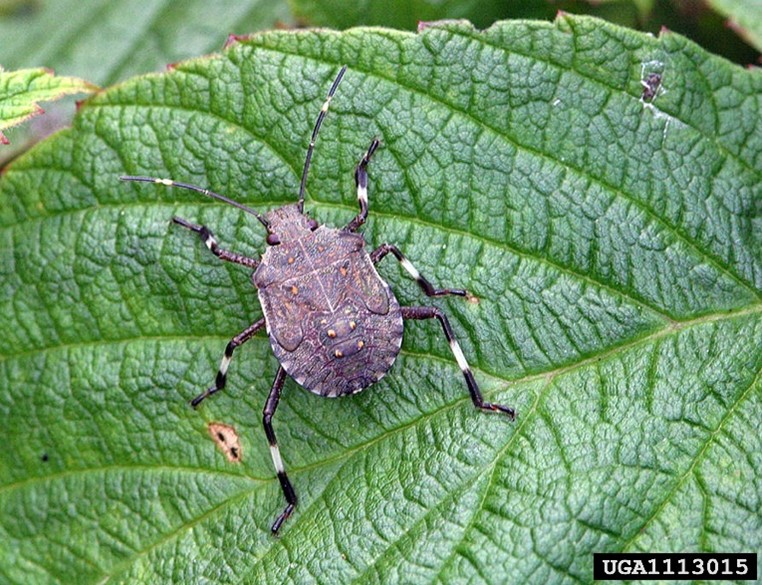Seasonal measures for Brown marmorated stink bug (BMSB)
BMSB can be distinguished from other stink bugs by the characteristic white bands on the antennae and rear end. Photo: Gary Bernon, USDA
What’s new this BMSB risk season
- Addition of China and Republic of Korea to the heightened vessel monitoring list
- Introduction of AusTreat for offshore treatment providers
- Removal of the Vessel Seasonal Pest Scheme
Brown marmorated stink bug (BMSB) is an exotic pest that feeds on fruits and vegetables and could cause major damage to agricultural crops, nursery stock and ornamental plants. It is also a public nuisance pest. During the colder months, it seeks shelter inside homes, buildings, vehicles, machinery and sheds. When disturbed or squashed it releases a smelly odour – hence the term ‘stink bug’.
BMSB is considered a ‘hitchhiker’ pest, often arriving in goods shipped from countries where BMSB is already found. When seeking shelter, they can find their way into goods awaiting shipment. They have been detected in a large range of cargo including machinery, vehicles and personal luggage.
The Australian Government Department of Agriculture, Fisheries and Forestry (DAFF) is responsible for Australia’s biosecurity at our international border. Each year between 1 September and 30 April additional measures are put in place to manage the risk of BMSB from arriving in Australia. This season, measures apply to high-risk vessels and goods arriving from 39 countries where BMSB is present. Vessels from other countries identified as emerging risks may be subject to random onshore inspections. The Government informs and updates potentially affected plant industries on any detections through the Consultative Committee on Emergency Plant Pests (CCEPP).
We can also do our bit and continue to be on the lookout and reporting any suspect sightings. Inspect plants and crops for bugs and bug damage and keep an eye out for BMSB when receiving shipments or any other commodities on your farm or packing shed.
BMSB looks similar to native Australian stink bugs, but it is larger – up to 1.7 cm and has white bands on its antennae and abdomen. The Australian Government has a quick reference guide for stink bugs – turn to page 23.
You can find further information here:

